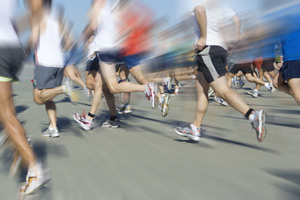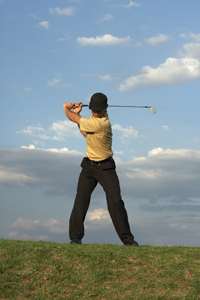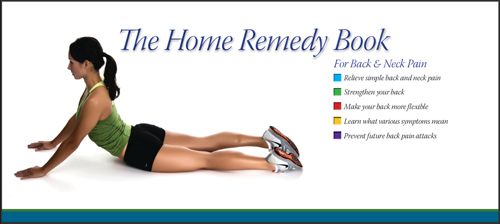- Locations
- Find a Physician
- By Physician
- By Department
- The Center for Spine Health
- Hand & Wrist Center
- Shoulder & Elbow Center
- Foot & Ankle Center
- Joint Replacement Center
- The Sports Medicine Center
- Pediatric Orthopedic Center
- Trauma & Fracture Center
- Osteoporosis and Bone Health
- Oncology Center
- Cartilage Repair Center
- Concussion Rehab Center
- OrthoDirect
- Careers
- Patient Portal
- Intranet
![]() Causes of knee pain | Understanding symptoms | Diagnostics | Nonsurgical treatments | Surgical options | Joint Replacement | Knee prevention
Causes of knee pain | Understanding symptoms | Diagnostics | Nonsurgical treatments | Surgical options | Joint Replacement | Knee prevention
Knee Pain Prevention
If you have knee pain, rest assured you are far from alone. Each year 6 million Americans head to the doctor for knee pain issues. This translates into 2.5 percent of the U.S. population sitting in doctors’ offices for relief of knee pain. Even more people try to self-diagnose and treat themselves with pain pills, anti-inflammatories and home remedies.
A U.S. study found that 18% of men aged 60 years and older reported knee pain, and that percent goes up as we age. Women experience knee pain even more than men.
But it’s important to remember that pain symptoms are typically a warning mechanism to our brains that something is wrong that needs to be addressed. Simply masking pain symptoms with drugs, or even just anti-inflammatories, can have long term impact on internal organs and one’s lifespan. Masking symptoms can also encourage the person to further overuse and injure their knee joint.
Consequently, it’s important to address knee pain symptoms early on to determine if there are non-surgical or surgical treatment options that can relieve pain symptoms without drugs or pills.
Step #1 is understanding the complex knee joint and how it works so you can better relate to treatment options that may be recommended by a knee specialist.
What causes knee pain?
Any mechanical device can and will fail if placed under excessive strain. That could be a fall down stairs or banging the knee into a dashboard during a car accident. But again, accidents and falls represent a relatively small percent of knee pain cases.
The vast majority of knee pain issues develop over a period of years. In these cases, the knee becomes like a creaky or unstable hinge that doesn’t get better, either because components in the knee are weak or unstable, or the lubrication in the joint and bone surface have been eroded over time.
That’s the bad news. The good news is that of all knees that hobble into doctors’ offices every year, only 20 percent will need surgery. Of those that don’t need surgery, many can get better with time and new non-surgical treatment options.
In some cases anti-inflammatories and specialized exercises increase range of motion, flexibility, strength, and resistance to future knee strain are usually prescribed. Sometimes knee braces are also used.
How a person causes their own knee pain
In 2020 Americans breeched a new undesirable record. The U.S. Government’s Centers for Disease Control (CDC) estimates that 42% of Americans are now classified as “obese” according to weight tables. This is a dramatic increase from 20 years ago in year 2000 when only 30% of Americans were “obese.”
A man 5’9” weighing more than 200 pounds is technically “obese” compared to normal weight of up to 168. (You can measure your own weight at: https://www.calculator.net/overweight-calculator.htm ) Sadly, the American culture has become more sedentary than other cultures and more prone to eat high carb foods with larger portions. Fact: there are more obese adults living in America today – 78 million – than in any other country in the world.
At the same time we are getting heavier, more of us could be classified as the “weekend warrior”. These are the middle-aged woman or man who works a desk job during the week, and then on Saturday morning jumps into a full-blown weekend of physical activity. Not surprisingly, by Sunday evening, these warriors are often trying to mask the damage done to their knees with pills and ice packs.
Accordingly, orthopedic surgeons are discovering new ways — NON-surgical as well as surgical — to repair or replace the worn out knee.
Your current choices will affect your retirement
When you are 80 years old, will you be frail and brittle and wheelchair-bound? A lot depends on the choices you make from age 30 onward. The more you lose control of your weight and place more and more strain on your knees, the more likely you will damage your knee joint.
This in turn limits your ability to be active and to keep weight off. This is the beginning of the vicious disability cycle: The less active you are, the more weight you gain, which makes movement even more uncomfortable.
When golfing, riding in a cart is certainly easier than walking and carrying clubs on your back or pushing a cart. But those are the choices that can dictate your level of activity years later in retirement.
While there are certainly exceptions, and skinny people can certainly have arthritic knees, the reality is that most knee replacements are done not on skinny people, but those who are obese, or worse, morbidly obese.
The knee joint is simply not designed to carry that much weight and it’s just a matter of time before the joint is destroyed. While orthopedic surgeons will recommend a knee replacement patient to lose weight before surgery, most don’t, and they then wear out the artificial knee prematurely which in turn requires more complex revision surgery for a second artificial knee joint surgery.
Risk of knee problems
Aging baby boomers might also be of higher than normal risk, where poor conditioning matched with overuse, joint strain, and joint degeneration can combine with the natural onset of arthritis.
Women may not play much football, but they have plenty of knee problems. The American Journal of Sports Medicine reports that women injure their anterior cruciate ligament (ACL) four to eight times more often than men. Why? It’s thought that the menstrual cycle and estrogen levels may increase risk of knee injury. Other theories relate to high heel shoes and tripping.
Differences in pelvic structure between men and women may also be an issue. A woman’s pelvis, which is wider, creates a sharper angle between the calf and thigh, increasing pressure on the knee. In addition, a woman’s kneecap rides in a shallower groove, making the mechanism less stable. Another factor discovered by researchers at the University of Michigan is that women don’t use their quadriceps and hamstring muscles in the same way as men. Men are equally reliant on the quadriceps and hamstrings, whereas women tend to rely more on their quadriceps during sports activities.
While overweight women are most often the ones to need a knee replacement for worn-out knees in their sixties, simple knee injuries occur more frequently in men. In fact, knee pain is one of the top ten reasons men see a doctor. Overall, knee pain occurs more in men because they participate more in sports, and they find knee pain stops them in their tracks.
Sport-specific Prevention
It is ironic that while movement can cause knee pain, movement can also prevent and alleviate knee pain. By bending and stretching, the muscles are lubricated and perform better. Exercise also helps us stay in shape and at a healthy weight keeping the knees strong and agile. Below, we have listed techniques you can use to prevent an injury divided into various sports categories.
 Running
Running
Running can be quite hard on the knees, especially if overdone. The reason it is such a liability, is that by its very nature the up and down jarring motion can cause pressure between the bones. After a while, the shock absorbing pads wear out and can no longer absorb the shock. This is particularly true of those who are overweight.
Walking
Walking, when done correctly can be a great form of cardiovascular exercise and is relatively innocuous to the knees. To get a great cardiovascular work out, try walking fast enough that it would be just as comfortable or more comfortable to jog. With the right training, you are workouts can push you as hard as they would a jogger and with less pressure to the knees.
Biking
Also better for the knees, biking can be a great cardiovascular activity. To prevent biking injuries, try to increase your range of motion beforehand. You can do this by putting your feet in the air and pedaling. This will increase your range of motion without any pressure.
Basketball
Basketball can be damaging to the knees not so much from running up and down the court as from landing in an uncomfortable way. So, weekend warriors, to avoid sprains and tears, try playing less aggressively.
Football
Really, football is not hard on the knees unless you are playing tackle. To prevent injury, it is important to remain in overall good shape and do the knee exercises shown here on the Web site.
Soccer
Although, this sport is not as popular in the United States as it is in other parts of the world, it is important to mention. Really, this sport works hard core on the cardiovascular system. The two areas of the knee that are pushed the hardest include the front knee and the patellar tendon. The exercises in the exercise library can help keep the knee strong, keeping it from injury.
Snow skiing
With ski injuries accounting for 137,000 emergency room visits a year (and 34 deaths), it is important to take preventative measures before hitting the slopes to make sure you do not become part of the statistic. The key thing to remember is bindings, bindings, bindings. Proper bindings will improve your performance and stability while easing up on your knees. Not only is it important to have the right binding, but the way it is adjusted is crucial as well. Beginner skiers should have a looser bind while more advanced skiers should secure their bindings quite tightly. There have been dramatic technological changes in the past few years making bindings over a couple of years old obsolete.
To build up your endurance, start preparing three months in advance. Build up your cardiovascular strength since mountain air is thinner making it more taxing to breath. And, if you get tuckered out, chances are you may become more sloppy and prone to injury.
Statistics have also shown that traditionally snowboarders have fewer knee injuries than skiers (primarily, wrist injuries). So snowboarding might double as a fun alternative to skiing.
Below are the skier's responsibility code set forth by the National Ski Areas Association designed to prevent accidents before they happen:
- Always stay in control, and be able to stop and avoid other people or objects.
- People ahead of you have the right of way. It is your responsibility to avoid them.
- You must not stop where you obstruct a trail, or where you are not visible from above.
- Whenever starting downhill or merging into a trail, look uphill and yield to others.
- Observe all posted signs and warnings. Keep off closed trails and out of closed areas.
Prior to using a lift, you must have the knowledge and ability to load, ride, and unload safely.
Water skiing
For water skiers, knee pain can stem from the vibration of the water underneath the ski. Just as with snow skiing, the right binding is crucial for preventing injury. Depending on what you want to do on the water, there are different bindings to use. Generally, a slalom skier will want to have a lot of ankles support, which in turn will support the knee when cutting across the wake.
A few months before water ski season, begin working out to prepare yourself. For instance, stretching out your muscles daily and improving cardiovascular performance will not only help you ski stronger and harder, it can help prevent injury. When lifting weights, an all over tone is important, but focus on key muscles that may not normally be utilized such as the forearms, and trapezoids. If you have a strong upper balance as you cross over the wake, your knees will not have to bear all of the brunt of the impact. For those who use two skis, be careful and if possible, you may want to learn how to slalom.
Wake boarding
After dramatically increasing in popularity over the past few years, wake boarding certainly deserves an honorable mention in this section. In preventing knee pain, the binding is the most crucial part of wake boarding. The way you board will determine the type of binding, how tight it is and at what angle it is put on the board. There can be a lot of unnatural knee twisting and strain, especially for beginners. To be prepared, build up your calf muscle strength and flexibility. Also, arm strength is imperative prevent knee injuries.
 Golf
Golf
Golf can be a great way to keep the knees strong — especially if you forgo the golf cart and walk the course. To lighten your bag, try to carry fewer clubs. Even if you use them all, there are some that you might not hit as well with such as the 2-iron, the 3-iron or the 4-iron. Sometimes, a knee injury can develop with your swing. If your knees hurt after playing golf, you might rotate your knees too much when you swing. Talk to a golf pro who can show you ways to swing without overly rotating.
Tennis
Tennis is, simply put, hard on your knees. With so much running, jumping, twisting, and landing, it is no wonder after a knee injury, many people have to give it up. Tennis related knee problems can come on suddenly, for instance with a poor landing after a volley, or they can develop over time as is the case with the degeneration of the cartilage. To keep this from happening, regularly do the knee exercises shown on this site.
Swimming 
Swimming seems to be the quintessential cardiovascular exercise that is simultaneously harmless to the knees (with the exception of those who have kneecap pain or patellar tendinitis). It puts almost no pressure on your knees and you can push yourself as hard as you are capable.
The right equipment will help prevent injury
SHOES: If you run a lot, buy great shoes. Shoes that cost $150 is a small price to pay since the alternative could cost you more financially and the pain simply is not worth it. Basically, buy the best shoes for whatever sport you are doing. Try to find a store that watches how you perform in the shoes than offers recommendations. Are you a pronater? A supinater? Finding this out will help you find shoes that compensate for any instability thus alleviating potential stress on your knees. Shoes can be deceptive. Don't buy a shoe because it looks stylish. Purchase for function rather than fashion.
KNEE BRACES: Knee braces serve different purposes. Some improve you kneecap stability while others prevent lateral movement in the knee. Overall, the knee brace mostly supports only a side-to-side movement as opposed to a rotational movement. Mentally, the knee brace serves as a reminder that the knee is not fully healed and to be careful not to hurt it further.
On the flip side, while the brace certainly provides support, it can also prevent the leg from strengthening crucial muscles. This ultimately can prevent the leg from healing and strengthening and sometimes even retard the healing process.
Certain types of braces are needed for specific injuries. For ACL tears that are treated without surgery, a 'derotation' brace customized for the individual should be used. For kneecap stability, a special brace needs to be used. Also, for the arthritic knee, a basic Neoprine brace can be helpful. Be sure to consult a physician to find out what type of brace (if one is needed at all) you should use.
KNEE PADS: Over the past decade roller blades have become quite popular. Kids are constantly trying to improve on a jump or learn a new trick. To keep safe it is important to wear knee pads in addition to a helmet for overall protection from falls. Although not as "fashionable" knee pads could help prevent a serious injury such as breaking the patella during a hard fall.








